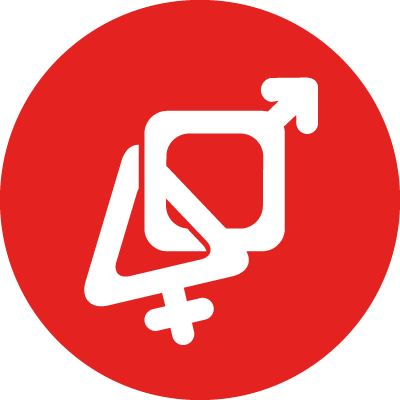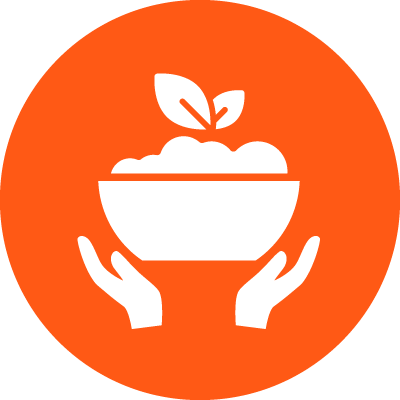CGIAR Flagship Report 2025
Insight to Impact: A Decision-Maker’s Guide to Navigating Food System Science

Insight to Impact is CGIAR’s inaugural flagship report, delivering actionable recommendations and solutions for decision-makers. Rooted in deep engagement with global experts and decades of CGIAR and partner science, it offers clear pathways to transform food, land, and water systems.

Why A Flagship Report
The Insight to Impact Report is a result of CGIAR’s commitment to continually improving the accessibility and relevance of our research to decision-makers.
It was sparked by funders, partners, and stakeholders recognizing that CGIAR’s extremely valuable research and global public goods, while delivering impact across the 2030 Sustainable Development Agenda, are not consistently being used. Lessons learned from report development will help CGIAR present its research in ways that better bridge the gap between science and action.
This report will not just be another set of documents filled with jargon and statistics. It is not designed to sit unopened on a shelf or hard drive. Designed for leaders, policymakers and researchers, it focuses on translating science into action. The report simplifies scientific findings into practical, understandable, and relevant information with links to tools and real-world applications.
The report is the first in a series that will deliver plain-language roadmaps to help decision-makers tackle complex food and nutrition security, and sustainability challenges.
Context
Context is everything. The innovations that are being developed don’t always fit the societal context where they are supposed to make a difference. In the multilateral context, science can mobilize economic and political power, but it increasingly needs to account for increasing partisan geopolitical negotiation processes which can undermine its potential.”
The reality is that today we are facing challenges, particularly in the last few years, that were unimaginable, even five or ten years ago. The speed at which climate change is coming at us and farmers around the world, is not what anyone expected …
The rate of return of investing in agricultural research is increasing by the minute, while the costs of not doing it are phenomenal.”
Which Decision-Makers Will Find This Report Useful?
For readability, this report uses the term “decision-makers” to encompass all actors with meaningful influence on food systems. The specific decision-makers targeted by this report are outlined in Figure 1. Additionally, each case study highlights the types of decision-makers who will find the insights particularly relevant.
Primary Decision-Maker Target Audience for Insight to Impact
Decision-makers from low- and middle-income countries and regional bodies engaged in national, regional, and global processes:Ministries of Agriculture, Fisheries, Forests and the Environment, Energy, Health, Finance, Planning, Social Affairs, and Water; International Finance Institutions; Those engaged with the United Nations (UN) Convention on Biological Diversity (CBD), the UN Convention to Combat Desertification (UNCCD) and the Intergovernmental Panel on Climate Change (IPCC), as well as the UN Food Systems Summit (UNFSS), the UN Committee on World Food Security (UNCFS) and other entities in pursuit of progress towards the 2030 Sustainable Development Goals (SDGs).
Other Decision-Makers Who May Find This Report Useful
National agricultural research and extension systems (NARES), non-governmental organizations (NGOs), policymakers and decision-makers in high-income countries involved in national, regional, and global processes, private sector actors from small to large agribusiness companies, funders/philanthropists, trade and regulatory bodies, non-CGIAR scientists/CGIAR staff, and regional economic and development bodies.
Scientists need to understand the system the government is operating in, understand and use their language, work with the policies already in place and respond to what the government aspires.”
Why Food Systems Science Matters?
Food system science and innovation can transform food systems to deliver across the 2030 Sustainable Development Agenda (Figure 2). It is the foundation that decision-makers at local, national, regional, and global levels can use to make informed decisions that result in food systems that:
- Support regeneration rather than drive environmental degradation
- Become a net sink rather than a source of Greenhouse Gas (GHG) emissions
- Can adapt to the challenges of climate change
- Protect biodiversity rather than depleting it
- Provide culturally appropriate, affordable, available, diverse, and safediets that ensure nutrition, health, and food security
- Contribute to producer stability and resilience, supporting livelihoods and reducing poverty for smallholders
- Can benefit over 500 million women and create new opportunities for 267 million young people.
(Adapted from With Science We Can)

Why CGIAR?
CGIAR is the world’s largest agricultural research partnership, driving innovative solutions to transform food, land, and water systems for a more sustainable and resilient future in the face of the climate crisis. Through a network of world-renowned Research Centers and Alliances (Figure 3) and collaboration with leading science and implementation partners globally, CGIAR generates cutting-edge knowledge, data, and evidence to build resilient food production systems and support sustainable development. Its research portfolio covers a diversity of crops, livestock, fish, natural resources, and agricultural policy and reform.
CGIAR has an annual research portfolio of just over USD 900 million with more than 9,000 staff working in over 85 countries. It is generously supported by contributors to the CGIAR Trust Fund and bilateral (project-directed) funders. CGIAR research shows a good return on investment. For every dollar invested in CGIAR agricultural research and development, investors see USD 10 worth of benefits.
If I had all the money in the world, I would put a lot of it into supporting efforts countries have started implementing food systems transformation pathways. I think we already have technologies and innovations to deploy now, while we continue to look for new evidence to accelerate progress going forward.”
As decision-makers at global, regional, national, and local levels grapple with intensifying environmental, economic, and geopolitical challenges, CGIAR provides actionable solutions tailored to the most vulnerable populations. Its mission is centered on improving the lives of those most affected by food system inequalities, particularly in low- and middle-income countries. It brings a comparative advantage to complex solutions by delivering multidisciplinary research across all aspects of food systems.
CGIAR tools, resources, and products are freely available to users as global public goods. They are designed to be used by a variety of stakeholders and in a wide range of contexts. These resources can be used to support global, regional, and national processes and to formulate, develop, and negotiate evidence-based decisions and policies that deliver impact across the 2030 Sustainable Development Agenda.
In 2025, to better target its research to the fast-changing global development challenges, CGIAR launched its new portfolio (Figure 4).
Since 2017, CGIAR has maintained a Results Dashboard. The current one (2022+) is presented in Figure 5. You can explore CGIAR results by impact and/or geographical area to learn more about innovations under development and use, key themes for capacity outreach, and how its research has contributed to policy and programmatic decisions (further detailed in Figure 6).
By leveraging the expertise and comparative advantage of CGIAR and its international network of partners, decision-makers can accelerate progress toward sustainable, equitable, and climate-adaptive food systems, ensuring a more secure future for all.
In terms of strengthening smallholder agriculture and protecting vulnerable communities, some examples of CGIAR science contributions to global initiatives include:
- Leading the development of the agriculture chapter of the Breakthrough Agenda Report 2023: Accelerating Sector Transitions through Stronger International Collaboration (The International Energy Agency (IEA), the International Renewable Energy Agency (IRENA) and the United Nations Climate Change High-Level Champions).
- Contributing to the EAT-Lancet Commission on Food, Planet, and Health.
- Contributing to the Synthesis of the Sixth Assessment Report of the Intergovernmental Panel on Climate Change.
Delivering evidence-based information to decision-makers, including the United Nations Framework Convention on Climate Change (UNFCCC), the UN Committee on Food Security (CFS), the African Food Systems Forum (AGRF), and the African Climate Summit.
Where CGIAR Works
Map showing CGIAR Center Headquarter locations and heat map showing geographic coverage of the CGIAR 2025-2030 Research Portfolio



CGIAR Policy Outcomes

Regardless of their type, most policies were implemented at the national level. The “policy or strategy” type category had the most outcomes across all levels, with 278 policy outcomes at the national level, 86 at the global level, 50 at the regional level, 33 at the subnational level, and 22 at the multinational level. It is evident that CGIAR has had a considerable effect on policies at the national level, and global policies or strategies.
Similarly, there were 51 “budget or investment outcomes” at the national level, compared to 8 at the subnational level, 16 at the multinational level, and 4 at the regional level. Finally, regarding curriculum-related outcomes, the national level had the highest number with 16, followed by the regional level with 6, and the subnational level with 3.
Report Consultation Process – Emerging Questions
The question for me is how we can best support smallholders and connect them to all the interesting and innovative systems in CGIAR?”
To guide the structure and content of this report, we carried out consultations with users and potential users of CGIAR research, donors, partners, and decision-makers in low- and middle-income countries, UN processes, other global representatives, and international bodies (Figure 7).

Seven important guidance requests repeatedly emerged:
- Decision-makers crave clarity and pragmatism: Too often, reports provide abstract theory when what is needed are practical solutions.
- National contexts matter: To truly be impactful, science must align with a country’s strategies, expectations, and needs.
- Partnerships drive progress: Success comes from collaboration across sectors and regions, which depends on complementarity and trust.
- Science must be accessible: Science that sits out of reach on bookshelves does nothing for the farmer or the policy advisor trying to make quick decisions.
- Interactive tools make science real: It’s not enough to present data and hope it gets used. Science should use tools that engage with different users to help them understand the concepts and their implications for everyday decision-making.
- Storytelling is a powerful tool: Stories showing impact have the power to move people’s imagination in ways that data alone cannot.
- Implementation requires continual engagement: Engagement does not end with a report. Effective science demands ongoing engagement to maintain alignment with the real world and with the decision-makers’ changing needs.
A full list of those consulted is available here .
Policymakers need more support to navigate food systems science. The most powerful scaling of agricultural research that I have experienced is through policy, where a policy environment is created in a way that is conducive for CGIAR technologies to be taken up. Yet not all researchers, not all scientists, are comfortable in the science-policy interface. This report marks a step towards bridging this gap.”
How to Use This Report
The report sets out to respond to decision-makers’ asks presented above across CGIAR’s five impact areas: Climate Adaptation and Mitigation ; Environmental Health and Biodiversity ; Gender Equality, Youth, and Social Inclusion ; Nutrition, Health, and Food Security ; and Poverty Reduction, Livelihoods, and Jobs . The final section highlights emerging challenges and innovations to help decisions in rapidly evolving environmental, political, and socioeconomic contexts.
Each section presents key challenges followed by what science is telling us about the most effective entry points for action, investments, and policy. It then presents a series of question-and-answer exchanges between decision-makers and scientists based on the consultation. The responses highlight carefully selected solutions with proven or promising success, adaptability across contexts, relevance to diverse food systems, and ready-to-use resources. Where technical terms are necessary for scientific accuracy, explanations are provided. Definitions can also be viewed in the Glossary of Terms.
Beyond the Report
This CGIAR Flagship Report: Insight to Impact is part of a wider bundle of decision-making resources. It will be supported by a series of publicly available videos, articles, and workshops where decision-makers and scientists will explore how to better connect research to its users. These discussions will shape future editions of this report, which will feature deeper, targeted analyses of in-demand research areas. The Insight to Impact website features more information that decision-makers can explore. Key learnings will be embedded into the new CGIAR portfolio to better bridge the gap between our science and decision-makers’ needs (Figure 8).

The value of research for development investment
Those who invest in research for development balance competing priorities. They are regularly asked to demonstrate the value of their investment decisions. Is the research meeting its objectives? Is it bringing about desirable change?
There is already considerable evidence demonstrating the value of investment in CGIAR, but it has been recognized that still more can be done to document and communicate that impact.
CGIAR is in the process of preparing the CGIAR Contributions to Impact Report, the most comprehensive collection of evidence yet of the impact of the work of CGIAR with its partners. It is underpinned by the real-world changes that are being delivered.
Due to be published in July 2025, the Impact Report will summarize the evidence reported and published during 2022-2024 of what CGIAR has achieved in recent years.
Alongside the report will be an Impact Compendium which will be a searchable repository of over 500 impact assessment publications from CGIAR. The Impact Compendium will be updated annually while additional CGIAR Impact Reports are planned for 2028 and 2031.
The CGIAR Impact Report and the companion impact compendium will be essential resources for research funders, government officials, researchers, and development workers in the agrifood sector.
Five CGIAR Impact Areas

CGIAR is targeting multiple Sustainable Development Goals across five Impact Areas.
Working with partners for each of the Impact Areas, CGIAR contributes to collective global targets for the transformation of food, land, and water systems across local, regional, and global levels.
 Climate adaptation & mitigation
Climate adaptation & mitigation  Environmental health & biodiversity
Environmental health & biodiversity  Gender equality, youth & social inclusion
Gender equality, youth & social inclusion  Nutrition, health & food security
Nutrition, health & food security  Poverty reduction, livelihoods & jobs
Poverty reduction, livelihoods & jobs
Developing countries have a lot of beautiful policies, frameworks, action plans, and strategies. But when it comes to the implementation, you will see lots of gaps. At the beginning of the process, we miss the scientists and the communities for whom the policies are intended.”
A very good dissemination strategy is better than very good findings that are inaccessible.”
Jump to Chapter









